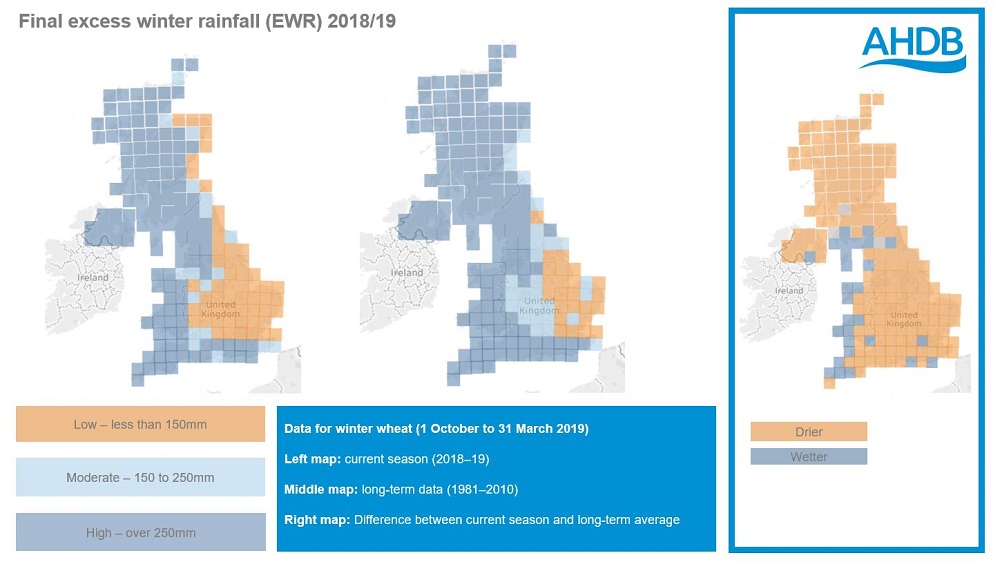Potential to cut back on nitrogen applied to cereals and oilseeds
Tuesday, 2 April 2019
Relatively dry winter conditions across most of the UK mean farmers could potentially reduce the amount of nitrogen applied to cereals and oilseed rape.
The extent of the ‘low’ and ‘moderate’ excess winter rainfall (EWR) zones is much wider this year, spreading further up the eastern coastline and more inland than average.
As lower EWR is associated with higher levels of residual soil nitrogen (N), the AHDB Nutrient management guide (RB209) should be followed to fine-tune remaining N applications.
RB209 describes how to estimate a field’s soil nitrogen supply (SNS) index by the Field Assessment Method. In addition to information on soil type and the previous crop, the method requires an estimate of the rainfall range for the field. Ideally, this should be based on EWR, as it provides a good indication of the potential loss of nitrate through leaching.
Published on the AHDB website, the final EWR estimates are based on data from 1 October 2018 to 31 March 2019, averaged over 199 (40 km by 40 km) regions. For each of these regions, a colour-coded UK map highlights the RB209 EWR category:
- Low – less than 150 mm EWR (annual rainfall less than 600 mm)
- Moderate – 150 to 250 mm EWR (annual rainfall between 600 to 700 mm)
- High – over 250 mm EWR (annual rainfall over 700 mm)
Despite the relatively dry winter, 31 of the 199 regions still had EWR in excess of the long-term average (1981–2010). These were mainly situated on the west coast of England, Wales and Scotland.
Sajjad Awan, who manages nutrient research at AHDB, said: “By early February, it already looked like it was going to be an exceptionally dry winter. Although there have been some significant spells of rain since then, particularly during early March, it has remained relatively dry, for most. In fact, the East coast of Scotland has just experienced its driest winter since 1964."
“All nutrient management plans should now be revisited. It’s particularly important to do this for spring malting barley crops, because these need to be grown to meet tight grain nitrogen band specifications.”
The EWR maps, as well as RB209, can be accessed via ahdb.org.uk/ewr
Notes to editors
Excess winter rainfall (EWR) is the rainfall between the time when the soil profile becomes fully wetted in the autumn (field capacity) and the end of drainage in the spring, minus evapotranspiration during this period (i.e. water lost through the growing crop).
The EWR estimates are based on Met Office UK MORECS EWR data from 1 October 2018 to 31 March 2019. Three EWR maps are produced: winter cereals, winter barley and winter oilseed rape.
EWR information was funded by Defra and produced by ADAS as ‘spring N advice’ up until 2015. In that year, AHDB took on responsibility for the publication of nutrient management guidance, through RB209, from Defra. The release of EWR data is part of AHDB’s commitment to promoting best nutrient management practice.


